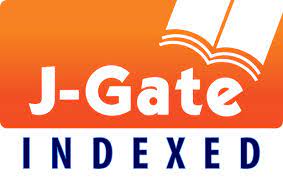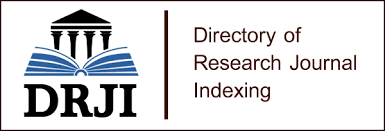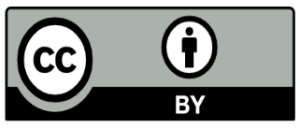THE STANDARD OF LEGAL LIABILITY FOR MALPRACTICE IN USING TRADITIONAL MEDICINE
Abstract
This research aims to clarify the standard of legal liability for traditional medicine practitioners in the case of malpractice. Traditional Medicine is "the sum total of the knowledge, skill, and practices based on the theories, beliefs, and experiences indigenous to different cultures, whether applicable or not, used in the maintenance of health as well as in the prevention, diagnosis, improvement or treatment of physical and mental illness. Determining the standard of legal liability for traditional practitioners guarantees consumer protection and provides judges with a stable legal system to hold accountable for those who violate the standards of care and practice. This paper makes an original contribution on existing literature because there is no a stable standard to judge in malpractice cases of traditional medicine whether in same or different jurisdiction. Accordingly, this research displays points of view for different legal and jurisdictional applications such as (United States of America, Australia, United Kingdom) in determining the standard of this liability whether apply standards of modern medicine to traditional practitioners or adopt a new appropriate standard. This study adopts two basic judicial standards in determining that liability, namely, ordinary standard of care and professional efficiency standard. So, to examine this issue, this study clarifies how apply these two standard to malpractice lawsuits of traditional medicine. The study concludes that no single standard of liability can apply to all traditional medicine practices and that the standard of liability must vary depending on the nature of traditional practice and how it is exercised.
References
Acupuncturist Practice Act 2015, the Colorado Revised Statutes, s 103.
Bolam v Friern Hospital Management Committee [1957] 1 W.L.R. 582.
Brennen McKenzie. (2010). CAM and the Law Part 3: Malpractice, Science-Based Medicine, , www.sciencebasedmedicine.org, accessed 21/9/2014.
Ch Sushil Rao. (2013). Scientific Study Reports Side Effects of Yoga, The Times of India (TOI), 27 October, 2013 Sunday, LexisNexis, Bennett Coleman & Co. Ltd. Holger Cramer &others, “Adverse Events Associated with Yoga: A Systematic Review of Published Case Reports and Case Series.â€, PLoS ONE, vol. 8, issue.10: 1.
Charoyl M. Creasey v. Charles A. Hogan [1981] 637 P.2d 114, 118, (SC).
Chiropractic Law 2011, State of Mississippi, the Board of Chiropractic Examiners, s 1/6.
Chiropractic Physician Practice Act Rule (156), s 102/1.
Chiropractors Act 1994 (Act 17), London, HMSO Publications, www.legislation.gov.uk, accessed 22/10/2015.
Christine C. Kung. (2005). Defining a Standard of Care in the Practice of Acupuncture, American Journal of Law & Medicine, vol. 31, no.1: 124, heinonlinebackup.com.
David M. Eisenberg & Others. (2002). Credentialing Complementary and Alternative Medical Providers, Annals of Internal Medicine, 137, 12: 970, annals.org/article, accessed 29/5/2014.
Dónal P. O'Mathúna, Spirituality and Alternative Medicine in the New Millennium, The Center for Bioethics & Human Dignity | Trinity International University, 2001, https://cbhd.org, accessed 24/5/2015.
Drury v. Life Rising Corp [2008] L-014411 (Ill. Cir. Ct. C).
Ethan B Russo & others, (2013). Professionalism and Ethics in Complementary and Alternative Medicine, New York, Routledge, 72.
Frank M. McClellan. (1994). Medical Malpractice, United States of America, Temple University Press, 31-32.
Gleen E. Bradford& David G. Meyers. (2001). The Legal and Regulatory Climate in the State of Missouri for Complementary and Alternative Medicine: Honest Disagreement Among Competent Physicians or Medical McCarthyism?â€, University of Missouri-Kansas City School of Law, UMKC Law Review, vol. 70, no.55: 67.
Huang Danmin v Traditional Chinese Medicine Practitioners Board, [2010] SGHC 152.
Ian Kerridge &others. (2013). Ethics and Law for the Health Professions, Australia, The Federation Press, 4th edn, 827.
Islam, M. Z. (2013). Health as Human Rights under Malaysian National Legal Framework. IOSR Journal Of Humanities And Social Science (IOSR-JHSS) Vol, 12(5), 51-57.
Islam, M. Z. (2013). Medical Negligence in Malaysia and Bangladesh: A comparative study. IOSR Journal Of Humanities And Social Science (IOSR-JHSS) Vol, 14(3), 82-87.
J. Brad Kallmyer. (2005). Standard of Care for Physicians Practicing Complementary and Alternative Medicine, Trustees of Indiana University, Indiana Health Law Review, vol, 2, n. 1: 229.
Joan Gilmour &Others. (2011). Natural Health Product- Drug Interaction, American Academy of Pediatrics, vol. 128, issue 4: 202, pediatrics.aappublications.org.
Julianne Charell, v. Nicholas J. Gonzalez [1997] 173 Misc.2d 227 660 N.Y.S.2d 665.
Julie Stone & Joan Matthews. (1996). Complementary Medicine and the Law, (New York: Oxford University Press, 166.
Kevin M. Enslen v. Ropert Kennedy [2001] Super. Ct. No. 02CC14382.
Loong Tse Chuan. (2009). Doctor's Practicing Alternative Medicine-the Legal Considerations, Hong Kong Medical Journal, vo.12 no.2 (2006): 165-166, www.hkmj.org, accessed 21/9/2014. Debra A. Miller, Alternative Therapies, United States, Green haven Press, 162.
Michael H. Cohen and Harry Nelson. (2011). Licensure of Complementary and Alternative Practitioners, American Medical Association, vol. 13, no. 6 376, virtualmentor.ama-assn.org, accessed 24/5/2014.
Michael H. Cohen, Vicarious Liability & Negligent Credentialing in the Integrative Care Center, Complementary and Alternative Medicine Law Blog, California, 1, www.camlawblog.com, accessed 25/7/2015.
Michael H. Cohen. (1998). Complementary and Alternative Medicine: Legal Boundaries and Regulatory Perspective, London, The Johns Hopkins University Press, 64.
Michael H. Cohen. (2000). Beyond Complementary Medicine: Legal and Ethical Perspective on Health Care and Human Evolution, United States: The University Of Michigan Press, 1st edn, 63-64.
Michael H. Cohen. (2007). Cases Addressing Physician Practice of Alternative Therapies, College of the Bahamas, 1, www.camlawblog.com, accessed 6/8/2015.
Michael Ruggio &Lauren Desantis-Then. (2009). Complementary and Alternative Medicine: Longstanding Legal Obstacles to Cutting Edge Treatment, Health & Life Sciences Law, vol.2, n.4: 162. www.polsinelli.com.
Miss. Farm Bureau Mut. Ins. Co. v. Garrett [1986] 487 So. 2d 1320.
Muh Endriyo Susila. (2005). Law Relating to Medical Malpractice: A Comparative Study between Indonesia and Malaysia, Ph.D. thesis, International Islamic University, Malaysia, 72.
Nancy Faass. (2001). Integrating Complementary Medicine into Health System, United States of America, Aspen Publishers, 213.
Peter Curtis. (2004). Safety Issues in Complementary and Alternative Health Care, In the Convergence of Complementary, Alternative & Conventional Health Care: Educational Resources for Health Professionals, edited by the Program on Integrative Medicine, University of North Carolina, , 7-10, www.med.unc.edu, accessed 6/7/2014.
Regulation of Professions and Occupations, Acupuncture 2012 (Act 457), Florida Statutes, Disciplinary Actions; Grounds; Action by the Board, 457.109(p), www.fsoma.com/statutes, accessed 6/12/2015.
Report of the IBC on Traditional Medicine Systems and Their Ethical Implications, 12.
Robert T. Vlasis. (2006). The Doctor Is Out, or Unconventional Methods for Healing: Resolving the Standard of Care for an Alternative Medicine Practitioner, Houston Law Review, vol. 43, 2: 508. Litigation-essentials.lexisnexis.com.
S. Y. Tan. (2006). Medical Malpractice: Understanding the Law, Managing the Risk, Singapore, World Scientific, 133.
Shakoor v Situ [2000] 4 All ER 181.
State of Mississippi, Chiropractic Law, the Board of Chiropractic Examiners, 2011, s 19 (3).
Susan M. Hobson. (1989). The Standard of Admissibility of a Physician's Expert Testimony in a Chiropractor Malpractice Action, Indiana Law Journal, vol. 64, Issue 3, 752. www.repository.law.indiana.edu, accessed 23/7/2015.
The Arizona Medical Board’s Guidelines for Physicians Who Incorporate or Use Complementary or Alternative Medicine in Their Practice, Arizona Medical Board, 2, www.azmd.gov, accessed 22/8/2015.
The College of Traditional Chinese Medicine Practitioners and Acupuncturists of Ontario, Standards of Practice.
Timothy Caulfid. (2012). The Law, Unproven CAM and The Two-Hat Fallacy., Focus on Alternative and Complementary Therapies, Royal Pharmaceutical Society, vol. 17, Issue 1, 5.
Timothy Caulfield & Colin feasby. (2001). Potions, Promises and Paradoxes: Complementary and Alternative Medicine and Malpractice Law in Canada, Health Law Journal, Vol. 9, 200.
www.who.int/medicines/areas/traditional/definitions/en/index.html
Published
How to Cite
Issue
Section
License
Copyrights for articles published in Journal of Asian and African Social Science and Humanities are retained by the authors, with first publication rights granted to the journal. The journal/publisher is not responsible for subsequent uses of the work. It is the author's responsibility to bring an infringement action if so desired by the author.
Articles published in Journal of Asian and African Social Science and Humanities are published under the Creative Commons Attribution (CC-BY) license, which permits others to distribute, remix, tweak, and build upon your work as long as they credit you for the original creation.
Â














